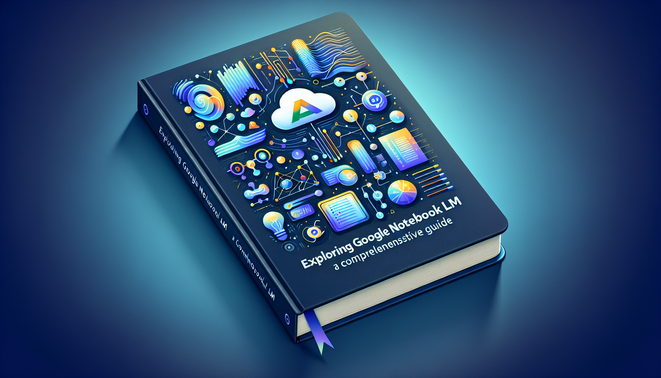Physical Address
304 North Cardinal St.
Dorchester Center, MA 02124
Physical Address
304 North Cardinal St.
Dorchester Center, MA 02124

Exploring Google Notebook LM: A Comprehensive Guide
Google Notebook LM is transforming AI and code documentation through a seamless notebook-style interface integrated with advanced cloud technologies and natural language processing (NLP). Dive into this guide to uncover its core features, business applications, and future trends, essential for leveraging cloud computing in the SaaS industry.
Key Takeaways
Google Notebook LM provides a collaborative environment for AI development, integrated with Google Cloud.
Key features include real-time collaboration, version control, and NLP capabilities.
Applications in SaaS demonstrate its potential for improving customer experiences.
Staying updated with trends is crucial for maximizing future benefits.
Introduction to Google Notebook LM
Google Notebook LM is a cutting-edge language model from Google, designed for flexible notebook-style code development and documentation. This revolutionary tool supports machine learning and NLP capabilities directly within the development environment.
Learning Objectives
Understand the architecture and purpose of Google Notebook LM.
Identify key innovations that set it apart from other models.
Google Notebook LM merges the versatility of traditional notebooks with the computational power required for sophisticated AI tasks, offering a valuable resource for developers and businesses aiming to optimize AI workflows.
Core Features of Google Notebook LM
Packed with features to enhance AI development, Google Notebook LM stands out through its real-time collaboration and advanced version control, alongside high-level NLP functionalities.
Real-time Collaboration and Version Control
With Google Notebook LM, teams can simultaneously work on the same document, facilitating collaborative coding and knowledge sharing. Real-time collaboration ensures synchronized contributions, particularly beneficial for distributed teams.
Version control empowers users to track changes, restore previous document states when necessary, and maintain clear development history, essential in collaborative settings.
Natural Language Processing Capabilities
Google Notebook LM’s NLP capabilities support developing sophisticated AI models, enabling users to employ pre-trained models or customize ones for specific needs, thus offering control over the AI development process.
Tip: Customize AI models to align with specific project goals for better outcomes.
Exercises
Create a sample notebook in Google Notebook LM demonstrating its NLP capabilities.
Implement a real-time collaboration feature for a language processing task.
Integration with Google Cloud Services
A prominent feature of Google Notebook LM is its integration with Google Cloud services, empowering users with Google’s cloud infrastructure’s scalability, security, and performance enhancements.
Learning Objectives
Examine interactions between Google Notebook LM and tools like BigQuery and Dataflow.
Leverage Google Cloud’s features in AI development.
The integration with Google Cloud tools, such as BigQuery for data analysis and Dataflow for processing, allows developers to manage large datasets efficiently and deploy models at scale.
Case Study: Integration Benefits
A leading e-commerce platform saw a 30% speed increase and latency reduction by integrating Google Notebook LM with Google Cloud services, illustrating the benefits of robust cloud infrastructure.
Exercises
Set up Google Cloud with Google Notebook LM to analyze datasets using BigQuery.
Deploy a model from Google Notebook LM to a Google Cloud endpoint to test performance.
Enhanced AI Development Workflows
Google Notebook LM introduces workflows that optimize AI development processes, crucial for DevOps teams aiming to streamline deployment and improve operational efficiency.
Learning Objectives
Discover new DevOps workflows using Google Notebook LM.
Assess integration impacts on deployment and efficiency.
Integrating Google Notebook LM into existing practices enables real-time collaboration and seamless cloud service integration, facilitating faster iterations and deployments.
Case Study: Workflow Efficiency Gains
A tech startup recorded a 40% improvement in its development process utilizing Google Notebook LM for real-time collaborative model iteration, demonstrating its potential to boost efficiency.
Practical Use Cases in SaaS
Google Notebook LM offers practical applications across the SaaS industry, with a feature set ideal for AI-powered solution development and deployment.
Learning Objectives
Explore real-world applications in the SaaS environment using Google Notebook LM.
Evaluate business value of Google Notebook LM deployment.
From chatbots to recommendation systems, SaaS applications leverage Google Notebook LM’s NLP capabilities to provide personalized customer experiences, enhancing satisfaction and retention.
Future Trends and Developments
Google Notebook LM is set to evolve, incorporating new features and improvements that bolster its position within the cloud ecosystem.
Learning Objectives
Predict the next generation of features for Google Notebook LM.
Discuss cloud ecosystem changes and implications for developers.
Future enhancements may include advanced model training, improved cloud service integration, and support for technologies like quantum computing.
Best Practices
Regularly update notebooks for the latest features.
Follow collaborative coding best practices for clarity and maintainability.
Implement monitoring tools for real-time performance tracking.
Note: Keep abreast of technological trends to leverage future Google Notebook LM updates effectively.
Pitfalls
Inadequate documentation in collaborative settings can lead to confusion.
Relying solely on default model settings might not yield optimal results.
Visual Aids Suggestions
Flowchart of Google Notebook LM integration with Google Cloud services, showing data flows and components.
Screenshot of Google Notebook LM’s interface highlighting key features.
Glossary
Google Notebook LM: A Google-developed language model for flexible code development and documentation.
Cloud Ecosystem: Interlinked Internet-based services and platforms by cloud service providers.
AI Development Workflows: Processes used to create and deploy AI solutions.
Knowledge Check
What are the key features of Google Notebook LM?
[ ] Real-time collaboration and version control
[ ] Limited integration with cloud services
[ ] Basic NLP capabilities
[x] All of the above
Explain how Google Notebook LM can improve AI development workflows.
Further Reading
Announcing Google Notebook LM
Google AI Platform Documentation
Google Cloud Machine Learning Architecture Overview